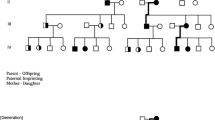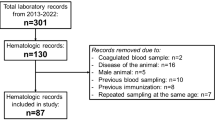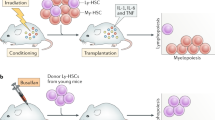Abstract
THROUGH work with short-term cultures of leucocytes from peripheral blood according to the phytohæmagglutinin method, the opportunity arose to examine the chromosome complement of the red fox (Vulpes vulpes Lin.). As no description of the chromosome morphology has previously been published, these observations are of some interest. Wodsodalek1 determined the chromosome number at 42, with sex chromosomes of the XY type, while Andres2 found the chromosome number in haploid cells to be 17. In 1947, Makino3 found 38 chromosomes in the spermatogonia of the silver fox and this number was later confirmed by Lande4.
This is a preview of subscription content, access via your institution
Access options
Subscribe to this journal
Receive 51 print issues and online access
$199.00 per year
only $3.90 per issue
Buy this article
- Purchase on Springer Link
- Instant access to full article PDF
Prices may be subject to local taxes which are calculated during checkout
Similar content being viewed by others
References
Wodsedalek, J. E., Anat. Rec., 51, 70 (1931).
Andres, A. H., Cytologia, 9 (1938).
Makino, S., Fac. Sci. Hokkaido Univ., 9, 345 (1947).
Lande, O., Nature, 181, 1353 (1958).
Moorhead, P. S., Nowell, P. C., Mellman, W. J., Battips, D. M., and Hungerford, D. A., Exp. Cell Res., 20, 613 (1960).
Author information
Authors and Affiliations
Rights and permissions
About this article
Cite this article
GUSTAVSSON, I. Karyotype of the Fox. Nature 201, 950–951 (1964). https://doi.org/10.1038/201950a0
Issue Date:
DOI: https://doi.org/10.1038/201950a0
This article is cited by
-
Comparative cytogenetic studies in the order carnivora
Chromosoma (1968)
Comments
By submitting a comment you agree to abide by our Terms and Community Guidelines. If you find something abusive or that does not comply with our terms or guidelines please flag it as inappropriate.



